How to collect pepper seeds at home: instructions for the correct harvesting of seed
When growing vegetables, the quality of the seed is essential. Many people buy seeds in stores or at the market, but not always plants grown from them correspond to the declared characteristics. If you are lucky enough to find “that” variety, try to save money and get the seeds of your favorite plants yourself.
How to collect pepper seeds at home correctly? Many gardeners are asking this question. The technology of harvesting your own seed is simple, but requires compliance with certain rules. We will talk about them in the article.
The content of the article
Which peppers are suitable for collecting seeds
The seed harvesting process begins with the selection of the mother plant.
Remember! A correctly chosen plant is the key to a good harvest.
Choose at least two of the healthiest, strongest and most productive mother bushes of the favorite varieties... Why at least two? This reduces the likelihood of possible mutations, gene disorders, viral diseases.
It is recommended to choose the best bushes from the moment the seedlings are planted in the ground... When selecting, attention is paid to the growth rate of the plant, the setting, the location and uniformity of the fruits, the correspondence of the fruits and the bush to the characteristic features of the variety.
Selection of fruits for collection
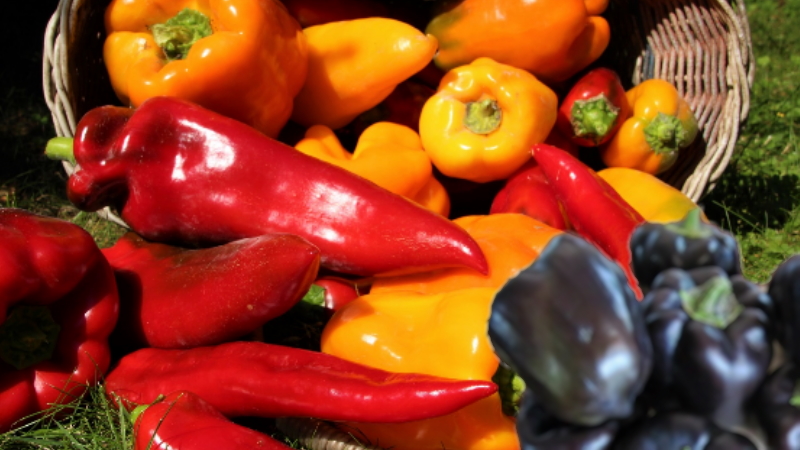
When choosing fruits, they are guided by the following rules:
- selection is made from shoots of the first, second or third levels;
- choose the fruits most appropriate to the description of the variety;
- the collection is carried out at the stage of biological ripeness, which is at least 40 days.
Seeds obtained from fruits ripening indoors germinate better, but with prolonged storage they lose their germination faster than those that ripened on the plant.
Advice! Mark selected peppers by tying a piece of gauze or braid to their stem.
Extraction and preparation of seeds from fruits of sweet and bitter peppers
Having decided on the choice of suitable fruits, they begin the harvesting process.
What to cook for collecting seeds
When working with sweet peppers, it is enough to arm yourself with scissors or a sharp knife, paper, plate and marker to sign the material.
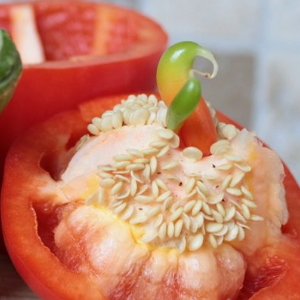 Bitter peppers are a little harder to work with. Gloves are recommended during harvest. This is not necessary as the outer surface of the fruit does not contain capsaicin, the substance responsible for the pungency.
Bitter peppers are a little harder to work with. Gloves are recommended during harvest. This is not necessary as the outer surface of the fruit does not contain capsaicin, the substance responsible for the pungency.
If you do get "burned", know that capsaicin dissolves in oils, alcohols and organic solvents. That is, in order to wash off the substance from the face and hands, they are first rubbed with vegetable oil, and then washed off with soap.
If capsaicin gets into the eyes, rinse them with cold water.
Getting seed
So, the selected ripe fruits are cut off. Next, the seeds are removed, making a circular cut around the stalk, remembering to cut off the inner partitions or simply cut the pepper in half.
The next step is drying. Experienced gardeners recommend drying the seeds directly on the stalks, leaving the plates with the material in a dry and warm room. After the seeds are dry, they are husked.
Advice! Harvest those seeds that are closer to the stalk, as they receive the best nutrition.
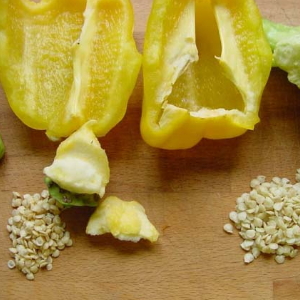
Seed storage rules
Proper storage is the key to high-quality seed for the next year... Well-dried seeds are stored in paper bags or envelopes. The paper allows air to pass through, and the seeds breathe in them, unlike sealed plastic packages.
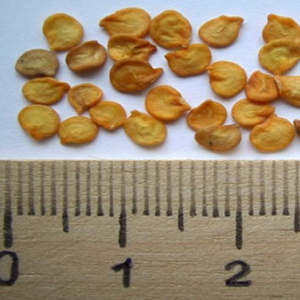
Attention! On the packages with seeds, indicate the name of the crop, variety, year of collection, as well as distinctive characteristics: color, size of fruit, ripening time, etc.
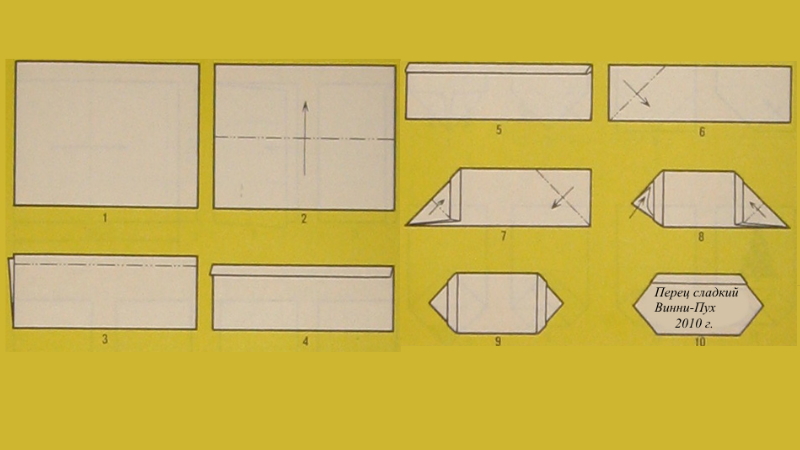 The seed bags are placed in a cool room with low air humidity. Storage at room temperature is allowed if the room is dry. When stored properly, pepper seeds are suitable for 3-4 years.
The seed bags are placed in a cool room with low air humidity. Storage at room temperature is allowed if the room is dry. When stored properly, pepper seeds are suitable for 3-4 years.
Five ways to make bags for storage with your own hands from Tatiana-Ogorodnitsa:
How to prepare seeds for planting
Seeds are sorted out before sowing, selecting the largest ones. Then they are dipped in a saline solution (1 tablespoon table salt per liter of water). Disinfection is carried out in a 1% alcoholic solution of brilliant green for 30 minutes, followed by washing and drying.
Disinfects and accelerates germination of 0.05% solution of chlorhexidine bigluconate (other names are "Sebedin", "Amident", "Hexicon"). When using chlorhexidine digluconate (from a pharmacy), the seeds are immersed in the undiluted solution for 30 minutes and then washed.
After this treatment, the seeds are placed in a warm place between two layers of thick gauze or planted in prepared soil.
Is it possible to collect seeds from pepper hybrids
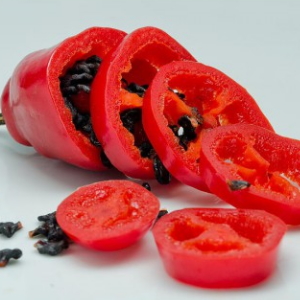
Despite the fact that hybrid varieties (with the F1 symbol on the package) differ in yield, resistance to adverse conditions and diseases, they have significant disadvantages: high cost, inability to collect seeds.
Those. technically you can of course harvest the seeds, but they won't sprout. Plants grown from hybrid seeds do not retain their parental properties.
General recommendations
Pepper is a self-pollinating plant, but cross-pollination of different varieties growing nearby is possible with the help of bees and bumblebees. Therefore, plants of different varieties are isolated with non-woven material or wrapped with gauze buds.
Interesting! There are peppers that are not cross-pollinated with other varieties, such as Rokoto bitter pepper or Capsicum pubescence.
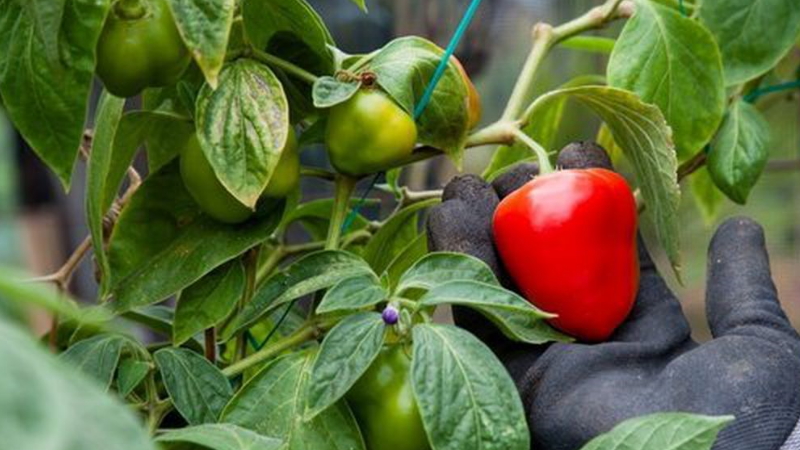
Read also:
Why is it worth growing the Atlant hybrid pepper.
Conclusion
Thus, it is not difficult to obtain high-quality seed material if you follow the selection rules listed in the article. Do not use pepper seeds that have an F1 in their name. They will not retain their parental characteristics.
When growing different varieties of peppers where there are pollinating insects, consider how to limit access to them.
Watch an interesting video on how to harvest seeds: